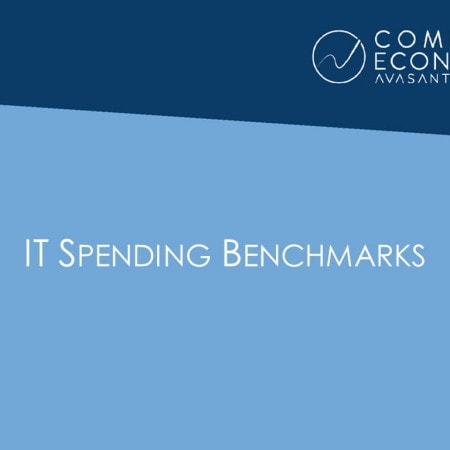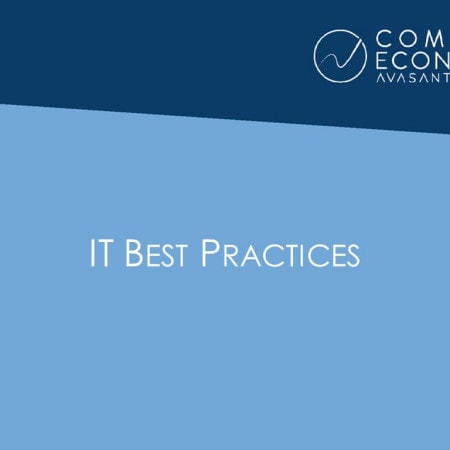-

Data Center Spending Benchmarks and the Case for Consolidation
Now that IT operational budgets are on the mend, IT organizations are once again assessing their data center strategies. In this study, we start with an assessment of data center spending and provide benchmarks that enable IT organizations to answer the question: Is our data center spending in line with our peers? Benchmarks include data center spending as a percentage of total IT spending and data center spending per physical server. We also provide benchmarks on virtualization rates and operating system mix. Finally, we demonstrate the potential cost-savings from consolidating data centers and servers to help IT executives make the case for data center consolidation. (26 pp., 16 fig.) [Research Byte]
January, 2014
-

Data Center Consolidation: Business Case Metrics
The study quantifies the benefits of data center consolidation and provides recommendations to ensure the success of the effort. It tracks the three-year trend in increasing data center consolidation activity and reports current consolidation trends by organization size. The business case for consolidation is then presented in two ways: first, we analyze total data center costs per server for Windows, Unix, Linux, and mainframe data centers, showing substantially lower per-server costs as data center size increases. Second, we find a reduction in total IT spending per user for organizations with single data centers versus those with multiple data centers. The study concludes with a summary of the return on investment (ROI) and total cost of ownership (TCO) experiences of organizations undergoing data center consolidation and recommended best practices for mitigating risks in the migration effort. (8 pp., 9 figs.)[Executive Summary]
August, 2008
-

Application Consolidation: Adoption Trends and Benefits
Although consolidation of multiple applications or multiple system instances into a single system can be a great undertaking, the resulting benefits can be huge. This study investigates the payoffs and risks associated with application consolidation, which is based on our survey of more than 200 IT organizations. We provide statistics on the adoption rate for application consolidation along with the percentage of organizations that experience positive or negative return on investment (ROI). Analysis of application consolidation cost experiences are also included along with the quantitative effect that application consolidation has on IT budgets. The report concludes with practical guidelines for application consolidation that mitigate the risks of the effort. (6 pp., 8 figs.)[Executive Summary]
November, 2007
-

Data Center Consolidation Reduces Costs and Improves Performance
This article investigates the benefits of data center consolidation and provides recommendations based on our findings. Based on our survey of over 200 IT organizations, we find that organizations with single data centers generally spend less per user than organizations with multiple data centers. We report adoption rates for data center consolidation by size of organization. We also provide a summary of the return on investment (ROI) experienced by organizations undergoing data center consolidation as well as their experiences with actual consolidation costs versus budgets. Our analysis concludes with guidelines for best practices that mitigate risk in the consolidation effort. (5 pp., 4 figs.)[Executive Summary]
September, 2007
-

Large Server Economic Returns Out Pace Small Servers
Most organizations have embraced a mix of large servers (costing in excess of $250,000) and small servers as major components of their system architectures. Computer Economics' Information Systems Spending and Technology Trends points out that while small server acquisitions exceed those of large servers, economic returns more often favor the larger machines. IT managers making equipment selection decisions will want to review these results before making choices. Click here to purchase. - $95
November, 2004
-

Storage Area Networks Support Consolidation
Storage areas networks are rapidly increasing in numbers in organizations both large and small. A major reason for SAN popularity is their history of providing positive economic results. Storage consolidation using SANs pays off by reducing the administrative and maintenance effort necessary to support pools of network attached storage devices or other types of distributed storage. Click here to purchase. - $150 (USD)
October, 2004
-

Mainframes Show Solid Performance in a Milestone Year
Celebrating its fortieth year, the mainframe continues to provide some owners with highly reliable and secure computing services. In comparison with lower cost servers, the mainframes are rarely hacked because of their superior security features, and big iron has deservedly earned a reputation for highly dependable operation. Such performance has its cost, and mainframes are noted for often stratospherically high prices. Click here to purchase. - $125
October, 2004

 Grid View
Grid View List View
List View